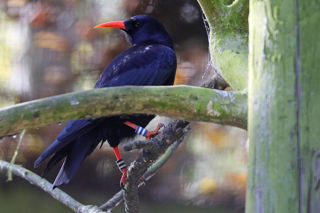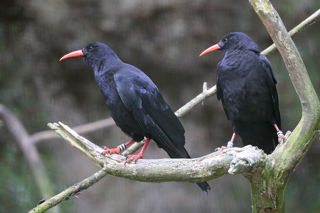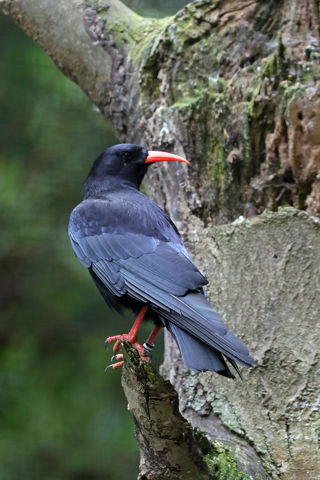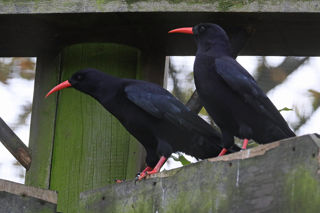
Conservation spotlight - Red-Billed Chough
17th Dec 2020
Species: Red-billed chough. Part of the crow family of birds.
Looks
Black plumage, red legs and bright red, curved bill.
Chough are charismatic birds and can be seen performing excellent acrobatic displays during flight, diving and swooping in the air, with males and females often mirroring each other in their displays.
Habitat (living spaces)
Lives in coastal areas with rocky crags and nearby short grassland pastures. Typically nests in rocky crevices, cliff faces and in caves. The chough’s need for these very specialised habitats are part of the reason for its decline. The chough mainly feeds on insects found in the soil on grazed grassland and in the dung from grazing animals, using its long, down-curved bill to probe into the top layer of substrate.
In winter, the chough can eat grain in stubble fields, along with small berries. In some areas chough also find invertebrates in seaweed washed up on the strandline.
Outside of the UK the red-billed chough is found throughout Southern Europe, and in mountainous areas in Central Asia, India and China
Status in the UK
The rarest member of the crow family, the red-billed chough is in decline in the UK, with an estimated population of fewer than 450 pairs, found only in West Wales, the Scottish isles, Ireland, Isle of Man and in Cornwall. Changes to farming practises and grazing regimes and persecution have caused this decline. The chough thrives in places where coastal areas are grazed in a traditional – less intensive – way and this is becoming a rarity.
The chough is protected in the UK under the Wildlife and Countryside Act, 1981 and is classified as ‘least concern’ on the IUCN * list despite a declining population across its range.
Importance for nature
The red-billed chough has adapted specially to its habitats, living off insects found in dung and in the top soil of short grazed grassland. The chough positively benefits from the use of grazing animals in coastal areas as they not only keep the grass short but their dung attracts increased food for the chough.
Wildwood’s work
Wildwood is working in partnership with Kent Wildlife Trust and other conservation practitioners on a pioneering project to bring back the chough to Kent, where they have been extinct for over 150 years. Together with our partners we are aiming to return the chough to the White Cliffs area of Dover. Wildwood is successfully breeding chough as part of a cooperative breeding programme coordinated by Paradise Park in Cornwall, which will provide birds for future reintroductions.
* The IUCN red list is an indicator list showing the conservation status of most wildlife on earth. Species can be classified as Least Concern (LC), Near Threatened (NT), Vulnerable (VU), Endangered (EN), Critically Endangered (CR), Extinct In The Wild (EW), Extinct (EX)




